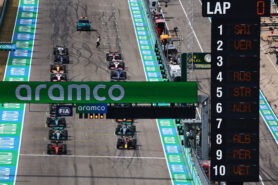Grid
The grid in Formula 1 racing refers to the starting positions of the cars on the track before the start of a race. The grid is determined by the results of the qualifying session, which is held on the day before the race. During the qualifying session, each driver sets their fastest lap time around the circuit, and these times are used to determine the starting positions on the grid.
The grid is typically made up of twenty cars, with the driver who set the fastest lap time in qualifying starting at the front of the grid, in the pole position. The driver who set the second-fastest lap time will start in second place, and so on, until the twentieth-fastest driver starts in the final position on the grid.
The grid can have a significant impact on the outcome of a race, as the drivers who start closer to the front of the grid have a better chance of winning the race, as they have a clear track and fewer cars to pass. However, the grid can also be affected by various factors such as penalties, technical issues, and weather conditions, which can lead to changes in the starting positions.
In summary, the grid in Formula 1 racing refers to the starting positions of the cars on the track before the start of a race. The grid is determined by the results of the qualifying session, which is held on the day before the race, and it is typically made up of twenty cars. The grid can have a significant impact on the outcome of a race, as the drivers who start closer to the front of the grid have a better chance of winning the race. However, various factors such as penalties, technical issues, and weather conditions can lead to changes in the starting positions.












LAST 3 F1 Fan COMMENTS